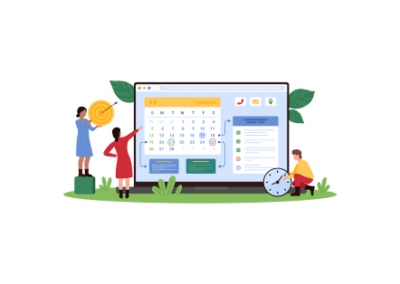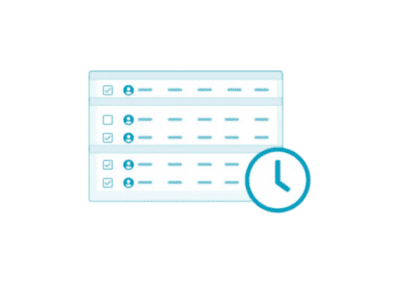Most workplaces realize the importance of workforce management these days. Efficient workforce management doesn’t just optimize scheduling and time tracking—it also improves employee satisfaction, enhances productivity, and reduces operational costs. Good workforce management practices can greatly impact your success. This is true whether you manage a small team or a large organization.
In this post, we’ll cover 10 essential workforce management best practices to help you streamline processes, boost efficiency, and create a healthier work environment.
1) Accurate Forecasting and Planning

The foundation of effective workforce management lies in accurate forecasting. Predicting your organization’s workforce needs in advance allows you to allocate resources efficiently. Look at historical data, seasonal trends, and future demand to anticipate staffing needs.
Workforce planning can help you more than you might think. You avoid overstaffing (which leads to unnecessary costs) or understaffing (which results in employee burnout and poor service). Regularly reviewing and adjusting forecasts based on actual performance will help maintain the right balance.
WFM Best Practice Tip:
Use workforce management software to automate forecasting and ensure more precise planning.
2) Effective Scheduling Practices
Creating schedules that align with both business demands and employee preferences is crucial to maintaining productivity and employee satisfaction. It is one of the most basic workforce management best practices. Employee scheduling software allow managers to easily assign shifts while taking employee availability and preferences into account.
Flexible scheduling and ensuring that employees aren’t overloaded are key to keeping the workforce happy and motivated. A well-thought-out schedule minimizes downtime and ensures the right people are in the right place at the right time.
WFM Best Practice Tip:
Offer self-scheduling options to give employees more control over their shifts and boost morale.
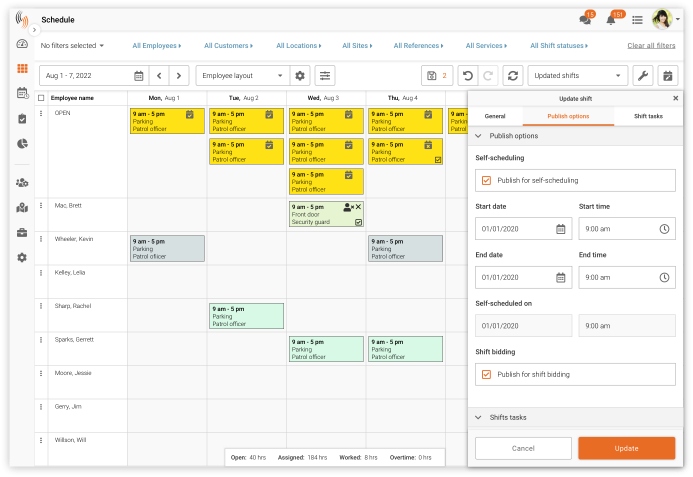
3) Monitor and Track Employee Performance
Tracking employee performance allows managers to identify high performers and those who may need additional support or training. Regularly monitoring performance metrics—such as attendance, punctuality, and productivity—provides valuable insights that can help in optimizing workflows and addressing potential issues.
With a performance management system, managers can track KPIs (Key Performance Indicators) in real-time. This helps them provide timely feedback and make improvements.
WFM Best Practice Tip:
To achieve this workforce management best practice, set clear, measurable performance goals and provide ongoing feedback to employees to keep them engaged and motivated.
4) Encourage Open Communication
Workforce management best practices aren’t just about numbers—it’s about people. Encouraging open communication between management and employees can create a more engaged and motivated workforce. Employees who feel heard are more likely to be productive and loyal.
Regular team meetings, one-on-one check-ins, and accessible communication channels are crucial. These methods allow employees to express concerns, suggest improvements, and share feedback. This helps improve the overall workforce management process, and creates a more positive work environment for all.
WFM Best Practice Tip:
Use tools like employee surveys and open-door policies to keep communication flowing between teams and management.
5) Implement a Time and Attendance System
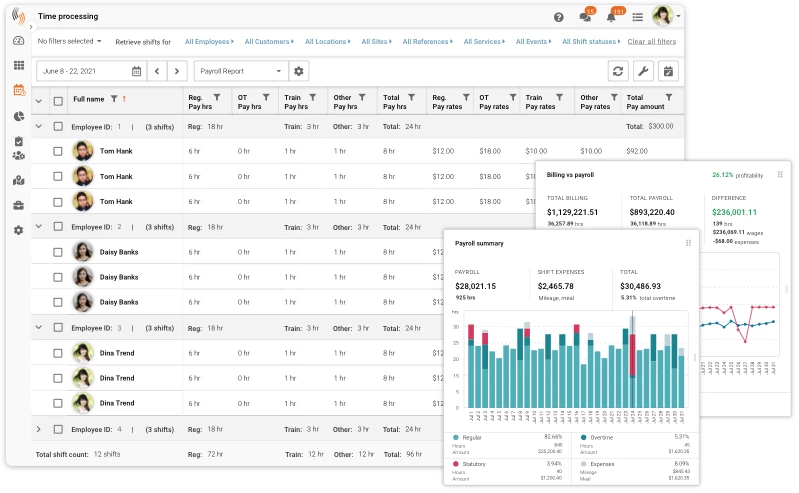
Manually tracking time and attendance is not only outdated but also prone to errors. Automated time and attendance software allow employees to clock in and out digitally, reducing errors and making it easier for managers to oversee attendance data.
With real-time tracking, managers can quickly spot trends such as frequent tardiness or absenteeism and address them proactively. This reduces payroll inaccuracies and helps ensure fair compensation for employees.
WFM Best Practice Tip:
Opt for cloud-based time tracking solutions to allow remote employees and those working on-site to log their hours seamlessly. This is something we offer here at Celayix! Check out a demo here.
6) Invest in Employee Training and Development
An effective workforce management strategy invests in employees’ growth. Offering continuous learning opportunities and skill/career development not only benefits your employees but also your organization. Well-trained employees are more confident in their roles, work more efficiently, and are better equipped to handle challenges.
Training and growth opportunities also lead to engaged employees, who are more likely to be loyal to your organization. Being able to retain top talent gives you a competitive advantage and helps save you money in the long run.
Training programs can range from in-house training sessions to external workshops or online courses. Investing in your employees’ development creates a culture of growth, boosting retention rates and overall job satisfaction.
WFM Best Practice Tip:
Set up personalized training programs for employees based on their roles and future career goals.
7) Optimize Labor Costs
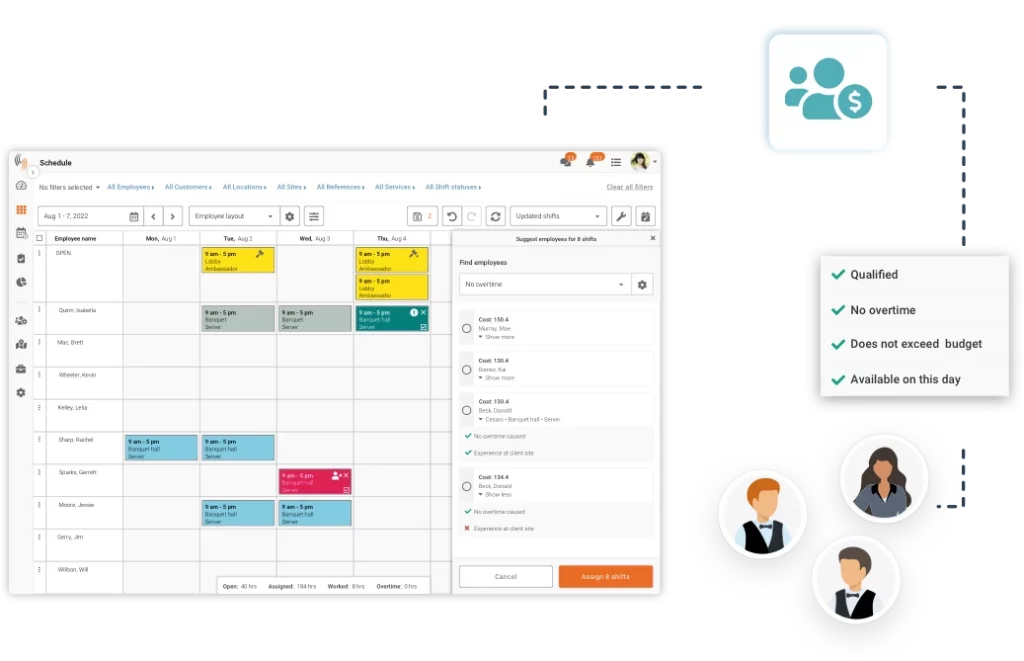
Managing labor costs is a key aspect of workforce and human resource management. It’s essential to balance staffing needs with budget constraints to prevent overspending. However, cutting labor costs without careful consideration can negatively impact service quality and employee morale.
To optimize labor costs as a workforce management best practice, regularly review staffing levels, adjust overtime policies, and analyze productivity data. Investing in workforce management software gives you real-time data on labor costs. This helps you make smart decisions about where to allocate resources.
WFM Best Practice Tip:
Regularly audit overtime hours to ensure they’re necessary and fair to both employees and the organization.
8) Ensure Compliance with Labor Laws
Failure to comply with labor laws can result in costly penalties and damage to your company’s reputation. Staying up-to-date with labor laws, including wage regulations, overtime rules, and employee rights, is crucial for effective workforce management.
Workforce management software can help by automatically ensuring compliance with labor laws and generating reports for audits. This way, you can protect your business from legal issues while maintaining a fair and compliant workplace.
WFM Best Practice Tip:
Use automated compliance tracking tools that update with the latest labor laws and regulations to avoid costly mistakes.
9) Promote Work-Life Balance
87% of employees expect their employer to support them in balancing their life between work and personal commitments.
PRNEWSWIRE.COM
Work-life balance is more than just a buzzword—it’s an essential element of a happy and productive workforce. Overworking employees can lead to burnout, high turnover rates, and decreased performance. Offering flexible work schedules, encouraging time off, and creating a healthy work environment can help maintain a balance between professional and personal lives.
Supporting a positive work-life balance shows employees that they are valued, resulting in higher morale and increased loyalty to the organization.
WFM Best Practice Tip:
Offer flexible work arrangements, such as remote work options or flexible start/end times, to promote a better work-life balance.
10) Leverage Workforce Management Technology
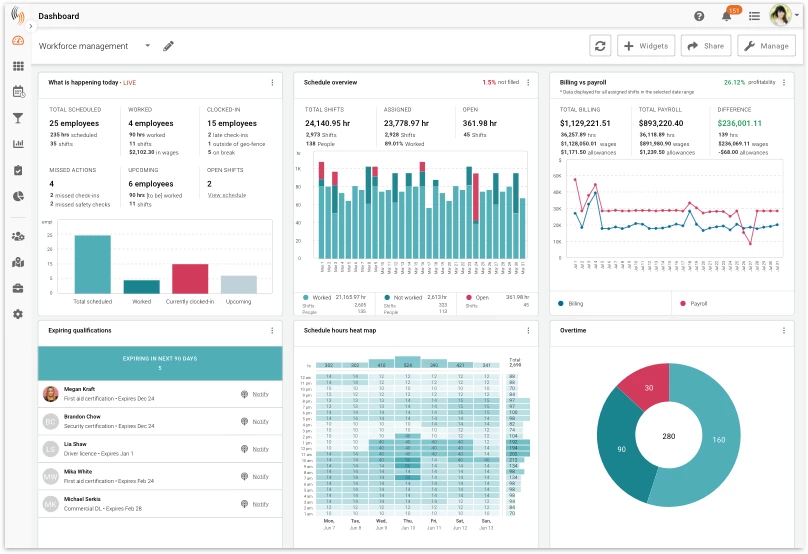
The days of using spreadsheets and manual processes for workforce management are long gone. Investing in modern workforce management technology is one of the best practices you can implement to streamline your operations. From time tracking and shift scheduling to payroll and performance management, an integrated WFM platform can centralize all your workforce-related tasks.
Automation reduces the likelihood of human error, improves efficiency, and gives managers access to real-time data, making decision-making easier and more accurate. It also helps you to make more informed decisions and to create a strategic workforce plan.
Best Practice Tip:
Choose a workforce management system that integrates seamlessly with your existing software and tools, ensuring a smooth transition and consistent workflow. Celayix works to ensure our best-of-breed software integrates into your existing systems and processes!
Implementing these workforce management best practices can transform how your organization operates. From accurate forecasting and efficient scheduling to promoting open communication and investing in technology, each of these practices contributes to creating a more productive, engaged, and compliant workforce.
By focusing on your people and improving processes, you can create a stronger and more successful organization. This will help you meet both short-term and long-term goals. Take a step forward by using these workforce management best practices in your daily work.



